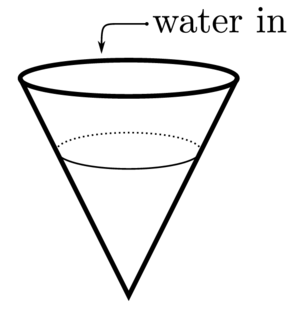Science:Math Exam Resources/Courses/MATH100/December 2015/Question 08 (b)
{{#incat:MER QGQ flag|{{#incat:MER QGH flag|{{#incat:MER QGS flag|}}}}}}
• Q1 (i) • Q1 (ii) • Q1 (iii) • Q1 (iv) • Q2 (i) • Q2 (ii) • Q2 (iii) • Q2 (iv) • Q3 (i) • Q3 (ii) • Q3 (iii) • Q3 (iv) • Q4 (a) • Q4 (b) • Q4 (c) • Q4 (d) • Q5 (a) • Q5 (b) • Q5 (c) • Q5 (d) • Q6 (a) • Q6 (b) • Q6 (c) • Q6 (d) • Q7 • Q8 (a) • Q8 (b) • Q9 • Q10 (a) • Q10 (b) • Q10 (c) • Q10 (d) • Q10 (e) • Q10 (f) • Q10 (g) • Q10 (h) • Q11 (a) • Q11 (b) • Q12 (a) • Q12 (b) • Q12 (c) •
|
Make sure you understand the problem fully: What is the question asking you to do? Are there specific conditions or constraints that you should take note of? How will you know if your answer is correct from your work only? Can you rephrase the question in your own words in a way that makes sense to you? |
|
If you are stuck, check the hints below. Read the first one and consider it for a while. Does it give you a new idea on how to approach the problem? If so, try it! If after a while you are still stuck, go for the next hint. |
Hint 1 |
|---|
|
Find the relation between the radius of the circle at the top of the water and the height of the water. |
Hint 2 |
|---|
|
Recall the volume formula for a cone. |
|
Checking a solution serves two purposes: helping you if, after having used all the hints, you still are stuck on the problem; or if you have solved the problem and would like to check your work.
|
Solution |
|---|
|
Let be the radius of the circle at the top of the water and be the height of the water. Then, using the picture in part (a) with a property of similar triangles gives the ratio between and as
On the other hand, by the volume formula for a cone, the volume of water can be written as
Therefore, by differentiating with respect to on both sides, we obtain
Since the volume changes at a rate of , the rate of change of the height of the water when the height is is
|
{{#incat:MER CT flag||
}}











